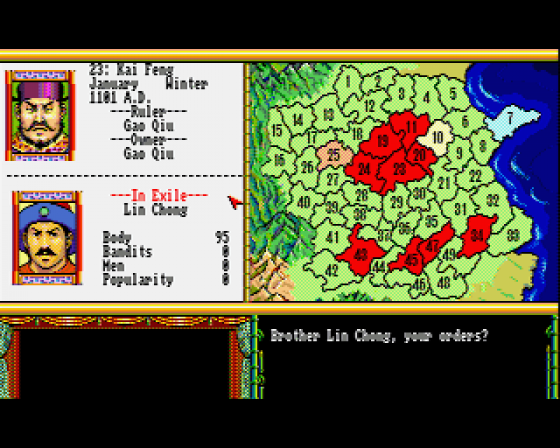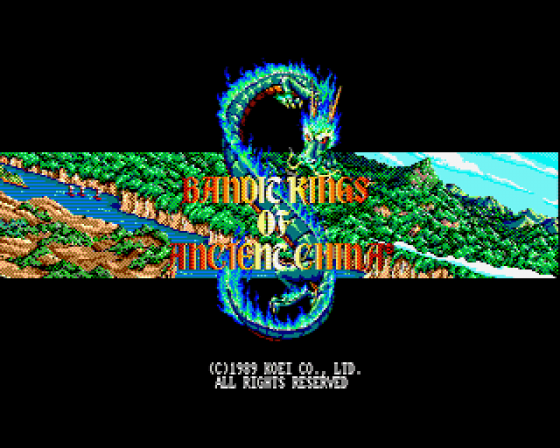
Zzap
 1st May 1991
1st May 1991
Bandit Kings Of Ancient China
Ancient Chinese myth told of 108 demon spirits set free on Lian Shan Bo mountain. The legends spoke of ostracized heroes who lived on the fringes of society until they could gain the strength to right the wrongs they had suffered, and restore the glory of the Song Dynasty.
This isn't any old fairy tale stuff made up by a Koei programmer either, it's a well respected Chinese legend which was one of the inspirations that held together Mao Tse Tung's revolutionary guerrillas in their march to take over China.
At first glance, Bandit Kings appears to offer the same interface and strategic challenge as Genghis Khan. The game covers 12th Century China while presenting some very colourful graphics, maybe even more detailed than Genghis Khan. Primarily menu-driven, with an excellent manual the game requires you to unite provinces, build a strong economic and military base and handle diplomacy. The eventual aim is to reunite the Song Dynasty.

During play the game offers, in a similar way to Genghis Khan, monthly turns in which you control a primary leader and must select options which indicate what you wish to do within each province during the given season: diplomatic negotiation, war, economic build-up, military escalation or determining internal politics. Even though the game uses excerpts from actual history, the storyline is entwined with myth and legend - magic becomes a vital factor.
There are many welcome animated sequences that depict an action or result. For example, a defeated player is depicted as a forlorn figure sitting on the floor of a jail cell and the door swinging to close upon him. There are other sequences which show the convicted player character being beheaded, and the burning and looting barbarian hordes during the invasion of AD 1127 (you must complete your mission before this occurrence, otherwise the game ends).
During strategic plan you will see a map of all of the provinces along with adjacent information windows. However, during tactical combat the play zooms into a hex-based screen whereupon you fight the foe. The aggressive quality of the enemy within this tactical scenario is not quite as high as Genghis Khan. However, the defensive play has improved. Maybe the fact that the AI has to cover a wider area than the Genghis Khan tactical area plays a part too.
Before you have the satisfaction of trouncing the dastardly villain, Gao Qui (a baddy who, whilst a servant of the Emperor, is doing a bit of raping and pillaging on the side) your character must achieve a popularity level of 250. Only then will the Emperor allow you to bring the fat, cowardly, sleazy bucket of splung to justice.
The attention-to-detail is a wonder to behold, the subject matter is refreshingly original, the computer opponent very good indeed and the graphics, whilst not state-of-the-art, are pleasingly detailed. Koei continue their high standards with the release of Bandit Kings. It's very addictive.
Scores
Amiga 500 Version| Presentation | 90% |
| Graphics | 83% |
| Sound | 70% |
| Hookability | 93% |
| Lastability | 90% |
| Overall | 90% |





